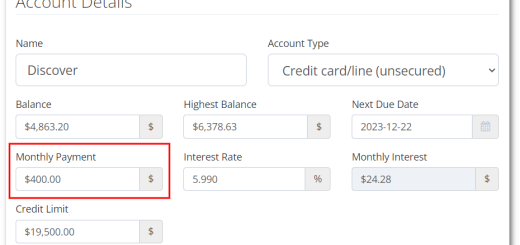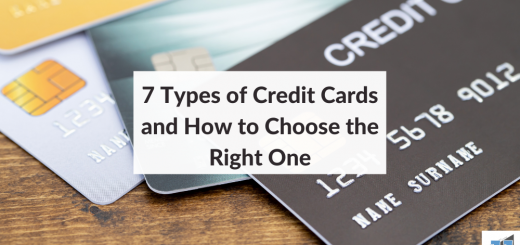Are Premium Credit Cards Worth It?
If you can pay them off in full, credit cards can be a great tool to get sign-up bonuses and rewards to offset the cost of your purchases. When you are deciding which new credit card to add to your wallet, you may find yourself asking, “are premium credit cards worth it?”
The short answer is yes. However, you need to look at the sign-up bonus, card benefits, and your personal financial situation before you apply for a premium card.
What is a Premium Credit Card?
I refer to credit cards that carry an annual fee as premium cards. The annual fees that I have seen range from $95/year all the way up to $550/year. In general, the higher the cost, the more benefits you get.
Don’t get me wrong. I’m not saying that you need any of these cards. There are many no annual fee cards out there that get the job done, like the Citi Costco Visa. This article is for people with a high level of credit discipline. You don’t want to get into more debt chasing sign-up bonuses.
What You Should Look For in a Premium Card
The first thing I look at when I am considering a premium card is the sign-up bonus. A rule of thumb that I use is that if I can’t get around $500 worth of value on a consumer card, I won’t apply for it. Value can be in the form of a straight cash back bonus or loyalty point programs like Hilton Honors.
The next thing I look at are the other benefits of the card. The American Express premium cards offer airline credits. For example, the Amex Gold ($250/year) offers $100 in airline credits each year. You can use this for things like seat upgrades or baggage. It earns 4x Membership Rewards (MR) on food and grocery purchases, so this one has been a keeper for me. The sign-up bonus was 50k points, which have a cash value to me of $625.
Be sure to check out my article on maximizing credit card sign-up bonuses.
There are plenty of other benefits that premium cards offer. Concierge service can be helpful if you are in a pinch. Also, look for purchase protection and extended warranties. The high-end ones even offer travel and car rental insurance.
Earning & Burning
Some of the cards are just not long term keepers. I get them for the sign-up bonus and close them out after a year.
The Chase Sapphire Preferred is one of those cards. It costs $95/year and is marketed as a mid-range premium card. I got a 60k Ultimate Rewards (UR) point bonus, which had a travel value to me of $900 since I also have the Chase Sapphire Reserve (the points are worth 1.5x more if you have a Reserve).
One thing to note is that you really need to hold the card for an entire year. If you get the bonus and immediately close the account, you risk not being able to get other cards in the future. The way it works is that after a year, the annual fee will post to your account. Just call and cancel it so you won’t have to pay. You may even get a retention offer to keep the card open.
Maxing Out the Benefits
The key to getting ahead in this game is to max out the benefits. The little things can add up and make a difference. When I first started a couple of years ago, you could use the Amex airline credits for airline gift cards. You could then go on Raise.com and sell them for around 80 cents on the dollar to recoup a good chunk of the annual fee.
The Amex Hilton Aspire is a good example of a card that has a bunch of benefits that can be maxed out. It offers a $250 statement credit for select Hilton stays. It also has a $250 airline travel credit and a $100 Hilton on-property credit.
Most cards offer a certain multiple on category spending. For example, the Amex Business Gold offers 4x points on the first $150k of advertising spending. If you have a business that does a lot of Google AdWords advertising, this will be valuable.
The little things are nice as well. The Amex Gold offers a $120 dining credit ($10/month) which can be used on Grubhub. I can pick up an almost free pizza every month thanks to this benefit. Amex Platinum gets you $15/month in Uber/UberEats credits. I keep track of each of the benefits in Evernote so I don’t miss out on any. Some of the benefits are monthly so it’s easy to forget them.
Related: How to Earn Extra Cash with Bank Account Bonuses
What’s in My Wallet?
I have quite a few open cards right now, but these are the cards I keep in my daily rotation:
- Amex Gold ($250/year): I like this card mainly because it earns a lot of points on food purchases. I estimate that we probably spend around $800 on food per month, which comes out to 3200 MR points. These points get redeemed for cash at 1.25x with the Schwab Platinum, so it’s the same as getting 5% cash back on food ($40/month in my case).
- Amex Schwab Platinum ($550/year): I carry this with me whenever I travel because it has a great concierge service. It also gets me into Amex Centurion airport lounges which are quite nice. The main selling point for me is the cash redemption capability. The Schwab Platinum is the only way to convert MR points directly into cash, which is awesome. This is my second year with the card and I wasn’t sure if I was going to keep it, but they offered me 50k MR to keep it open. Those points are worth $625, so Amex effectively paid me $75 for the privilege of using their card for another year!
- Amex Blue Business Plus ($0/year): This card earns 2x MR points on every purchase. Teamed with the Schwab card, it gets turned into a 2.5% cash back card, which is very hard to beat.
- Chase Sapphire Reserve (CSR) (was $450/year but is now $550): This is another excellent travel card. The annual fee is high, but it offers a $300 annual travel credit that is really easy to redeem. This is a great card to get if you want to dabble in high-end cards.
- Citi Costco Visa ($0/year): I only use this to get into Costco and for gas, but it’s still a great no-fee card. 4% off of gas is a great benefit and 3% cash back on travel and restaurant purchases is tough to beat on a free card.
I use Samsung Pay on my phone to keep cards like Discover and Chase Freedom. I really only use these cards on their quarterly bonus categories.
Brand Loyalty
Don’t be afraid to shift over to a different card if it will help make you money or offer some other valuable benefit. I recommend that you stick with one suite of cards so your cash back earnings are consolidated. While I prefer to get Amex MR points right now, many people like to use the “Chase Trifecta,” which is a combination of different Chase cards you can use to maximize their value based on your spending habits.
I’m not sure if I will keep my Amex Schwab account next year. I have heard they don’t do retention offers two years in a row, so I might switch over to Chase and use the CSR as my main card. We’ll see how it goes.
Summary
The best way to get the most value out of these cards is if you travel. Pre-COVID, I traveled a few times a year and was able to get some great value out of these cards. The redemption value of the CSR is outstanding when used on Chase’s travel portal.
If you don’t travel at all, it’s going to be difficult to get the full value out of these cards, so they are probably not the right fit for your needs.
Check out the Citi Costco Visa and the Citi Double Cash Mastercard if you are looking for recommendations on no-fee cards.



